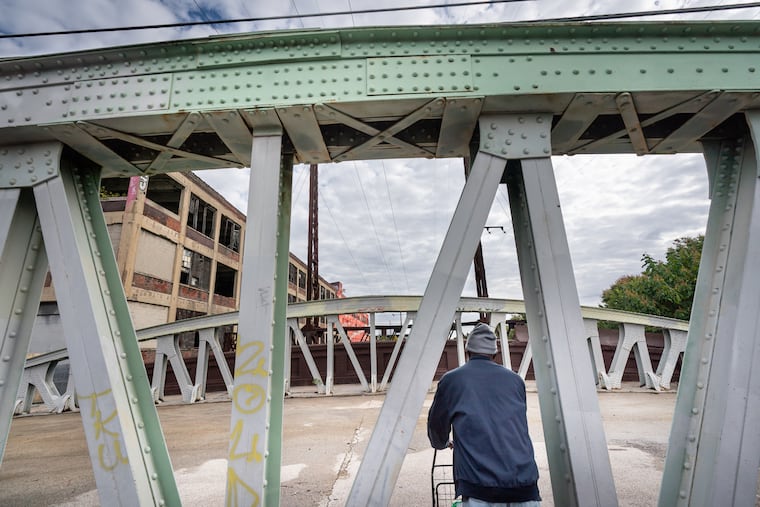Feds give $1.6 million to Philly for repair of bridges over Amtrak and SEPTA tracks
The idea of the planning and engineering grants for bridge rehab is to help local governments get more projects "shovel ready."

Philadelphia has won a federal grant of about $1.6 million toward rehabbing 18 aged bridges that carry city streets over electrified rail tracks owned and operated by Amtrak and SEPTA, the Federal Highway Administration said.
Acting Administrator Stephanie Pollack announced the award Friday morning on the 103-year-old Margie Street Bridge, which spans the Northeast Corridor line in North Philadelphia. The bridge is closed to vehicles.
The agency is giving $18.4 million directly to 23 local and county governments for the first time to finance planning and feasibility studies required to qualify federal construction money, Pollack said. Highway and bridge grants have not covered preparatory work, but the federal infrastructure law, enacted last year, opened funding for it, she said.
The money will “help us kick-start bridge rehabilitation projects … in North Philadelphia as well as other communities that have suffered too long from neglect,” said Michael A. Carroll, the city’s deputy managing director for transportation and infrastructure.
“Many of these bridges have fallen into poor condition while they’ve sat just idly on our to-do list for decades,” he said.
» READ MORE: AILING BRIDGES
Doing construction or maintenance on bridges over active rail tracks in the city is complicated because of the electrical equipment that powers the trains — and the need to keep rail service running during repair work.
The city, in concert with the Federal Highway Administration, Amtrak and SEPTA, will use the money to figure out ways to temporarily relocate railroad power lines and the catenaries that connect trains to them in order to do both, Carroll said.
Philadelphia owns or maintains 27 bridges that cross rights-of-way used by SEPTA alone or shared with Amtrak, said Scott Sauer, the transit agency’s director of operations. He said the bridges have not caused any major damage to tracks or trains, but some have steel mesh beneath to catch crumbling concrete.
Pollack, the FHWA leader, said Congress’ inclusion of money for planning will help build a pipeline of worthy bridge projects that “often are pulled up short” because local governments can’t afford the first step.
“There are great projects that aren’t shovel ready because no one’s been able to figure out how to pay for the engineering,” Pollack said in an interview.